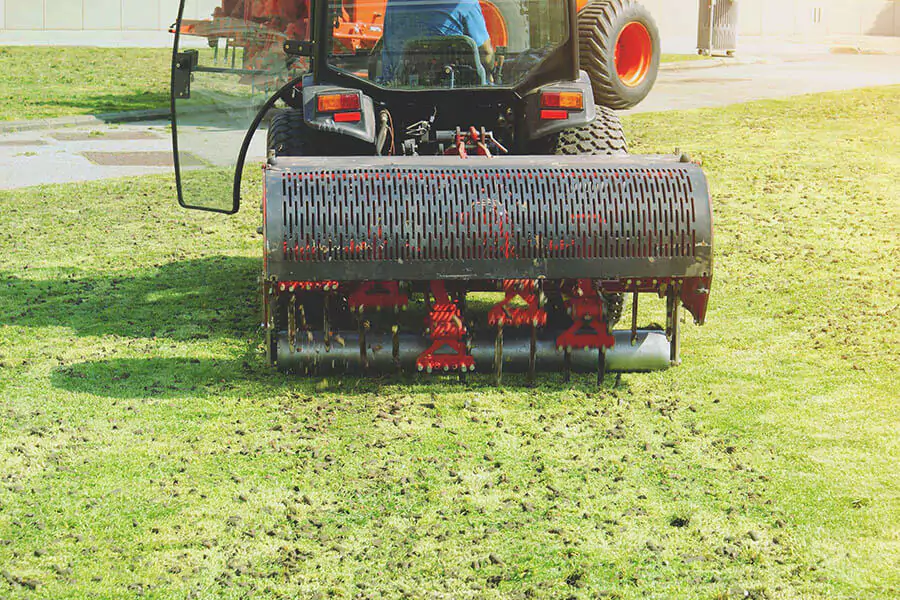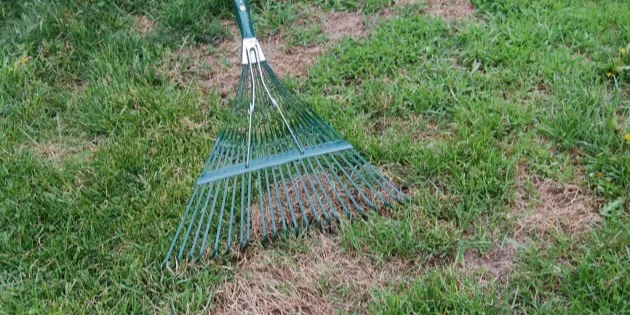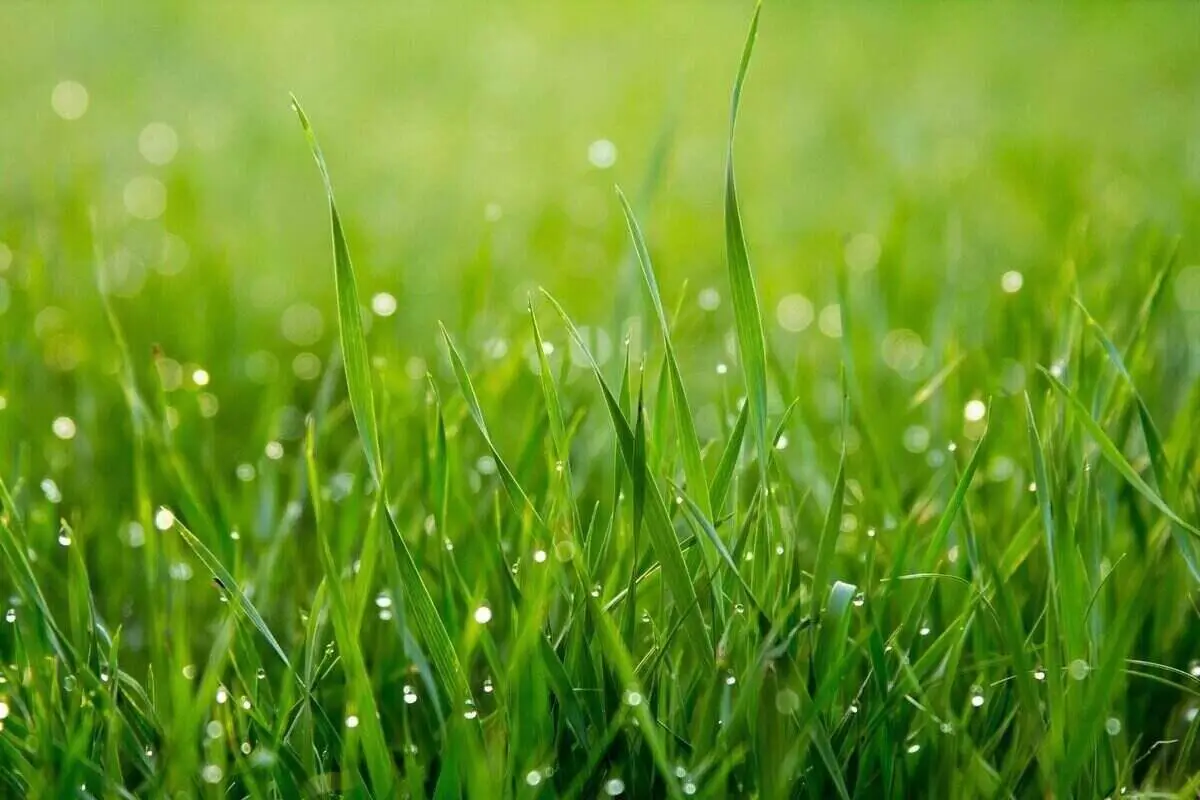How to Scarify Your Lawn
Last Updated on August 4, 2023 by Duncan
Growing a lush lawn can be time-consuming. Aside from effectively managing the weed and mowing, it’s also critical to pay attention to what’s happening beneath the grass blades.
Thatch is a fibrous collection of organic material that accumulates beneath the green turf. It includes living and dead stems, roots, leaves, and other items.
A tiny covering of thatch can help the soil retain moisture and temperature, but levels thicker than a half inch or more can impede optimum fertilization, aeration, and water absorption.
Thatch contains lignin, an organic polymer that accumulates and degrades slowly. Lignin has various roles, one of which is to create stiffness and form.
Microbes, fungi, and bacteria naturally break down this layer in the soil, but only sometimes at the same rate as new grass grows, which is where a troublesome cycle begins, and luscious lawns become scraggly.
This buildup results in a thick, bothersome coating of thatch and compacted soil, which scarification can remedy.
Scarification vs. dethatching
Both dethatching and scarifying are lawn care best practices that entail the removal of debris, moss, and organic matter from the base of your grass.
While both treatments can assist your lawn’s health, dethatching removes a lighter layer of thatch, whereas scarifying is more forceful and cuts deeper into the lawn to remove heavier layers.
Why do you scarify your lawn?
Scarifying your grass has several advantages, the most notable of which are:
- It allows air, water, and nutrients into the soil, promoting the development of grass.
- It aids in the removal of moss as well as weeds (which, if left to fester, can deprive your healthy grass of all the nutrients it requires to survive).
- It revitalizes tired-looking lawns and promotes the growth of green, thick grass.
- It minimizes the likelihood of moss growing in the future.
- It aids in the reduction of soil compaction.
If your grass has a thick coating of thatch (above 0.5in}, it’s time to scarify.
What do you use to scarify your lawn?
You can dethatch or scarify your grass in two ways: manually with a dethatching rake or with a motorized dethatcher/scarifier.
Regardless of the method you settle for, ensure you mow your lawn to a low height before dethatching or scarifying. This will improve the visibility of the thatch and access to the layer of the thatch for removal.
How do I manually scarify my lawn?
To manually dethatch grass, you need a dethatching rake, also known as a spring tine rake. Sharp tines on these rakes cut through the thatch layer and draw it upwards from the lawn’s base.
This can be strenuous work and will take time, so you should use this method if you have a small lawn or are looking to undertake light dethatching.
To scarify your lawn, rake the surface of the lawn using a dethatching rake, then overlap your rakes in the other direction to ensure all dead grass is gone.
When you rake in different directions, you loosen and break up layers of dead matted grass and moss, which loosens the moss and pulls it up from its roots.
‘When you use a mechanical scarifier, you create grooves that allow oxygen and water to reach the grassroots, allowing them to grow better.
To get the best results, avoid scarifying your lawn if it is too moist. If your lawn is damp when you scarify, you might pull up the grass by its roots rather than merely removing thatch and moss. Scarifying works best at temperatures between 15°C and 20°C.
You should go up and down your lawn with your rake, gently pulling up any moss or thatch – don’t use too much force, as leaving a little thatch behind will protect your lawn.
After removing the top layer, reverse direction and apply extra pressure to the soil with your rake. By changing the direction, you catch any material pushed back into the soil on your first pass.
It’s recommended that you compost the sacrificed material, but if doing it in spring, leave little clumps of removed moss and grass in quiet sections of the garden for the birds to collect and use when they are nest-building.
A good way to do it is to consider scarification as a pruning technique and a thatch controller. You shouldn’t try to eliminate every last particle of thatch or moss. You should leave as much grass as possible to help fill the lawn.
How to use an electric scarifier
Although scarifying a lawn with a rake is doable if you are physically active and have a small lawn, a corded or battery-powered scarifier will make the job much easier.
The ideal scarification approach is renting a verticutter or lawn scarifying device from a local retailer. You can also buy one if you have a budget.
Before using the scarifier, read the operator manual and follow all safety instructions.
If your scarifier does not gather thatch in a catcher or box, you must manually remove thatch and debris from the lawn’s surface. This can be accomplished by raking or using your rotary mower.
Set your lawn mower to a high cutting height and run it over your yard. This should work well for collecting thatch.
After mowing the lawn, start the lawn scarifier on high settings and go over the surface a few times. Like a rake, you should repeat the operation in different directions but drop the settings each time so it’s less powerful (and removes less).
Set the scarifier blades to the right depth, often 1/4 to 1/2 inch depending on the quantity of thatch buildup, and move the scarifier across the lawn in parallel lines, slightly overlapping each pass.
When doing it, don’t scarify too deeply, as this can harm the roots.
After scarifying the lawn, collect the debris with a rake or lawn vacuum.
Watering the lawn and applying lawn fertilizer is also wise to promote healthy grass growth.
How do you know it’s time to scarify your lawn?
There are a few indicators that your grass needs dethatching or scarifying. Here are some things to keep an eye out for:
If your grass is thinning or not growing as well as it once did, it could be because a covering of thatch has formed, preventing water, nutrients, and oxygen from reaching the grassroots.
If you walk on your grass and it feels spongy, this could indicate that the thatch layer is too thick.
If your grass has prominent matted spots, this often indicates a heavy layer of thatch beneath.
How often should you scarify your lawn?
It’s recommended that you do it once or twice a year.
How do you revive a lawn after scarifying?
To revive your lawn after scarification, you must have a good lawn care regimen, including aeration, to keep the grass thriving.
Aerated the lawn by poking small holes with a garden fork or aerator. When you aerate the lawn, you improve drainage, which improves soil condition and removes moss.
You should aerate your lawn once a year to reduce compaction and bring your soil back to life.
Another thing you should do is use liquid moss control. After scarifying, use a liquid moss control to rehydrate your lawn.
When considering how to get rid of moss in a lawn over time, remember that ‘dense, luscious lawns are wonderful at suppressing weeds and repelling the return of moss, so always aim to maintain a healthy lawn.
Many people believe that growing densely packed grass is difficult, but it couldn’t be easier.
To fix patchy lawns caused by moss, follow these simple steps:
- First, determine the soil’s acidity, which you can do using a soil testing kit. If the pH of your soil is too low, it becomes acidic, and moss will thrive and return.
- You must increase the pH of the soil by coating it with calcium carbonate, which elevates the pH of the soil.
- Rake the surface of the soil, removing any stones and trash.
- Plant the grass seed.
- Rake the seed gently to ensure fair dispersion before firming it down with your feet or a light roller.
- De-compact the area using a fork and gently push back on it to break the dirt and yield better results.
Why is my lawn full of moss?
Moss grows on your lawn as a result of poor soil health. Simply put, thatch buildup indicates poor soil. Poor soil causes moisture retention in the thatch and lawn surface, and spores proliferate.
This is especially true in shaded regions of the garden that are prone to becoming soggy. Following the lawn care techniques listed above, you can increase soil health, resulting in the establishment of healthy grass and a decrease in moss.
What will kill moss and not grass?
You cannot kill moss, no matter what product you are sold.
The best technique to get rid of moss is to maintain a thorough lawn care regimen of scarifying, aerating, and mowing. This way, you keep your lawn healthy and allow air and nutrients to reach the grass’s roots.
Keep soil and thatch levels healthy and apply moss control after each scarification to help prevent moss from taking hold.
Also read: Lawn scarification for beginners.


